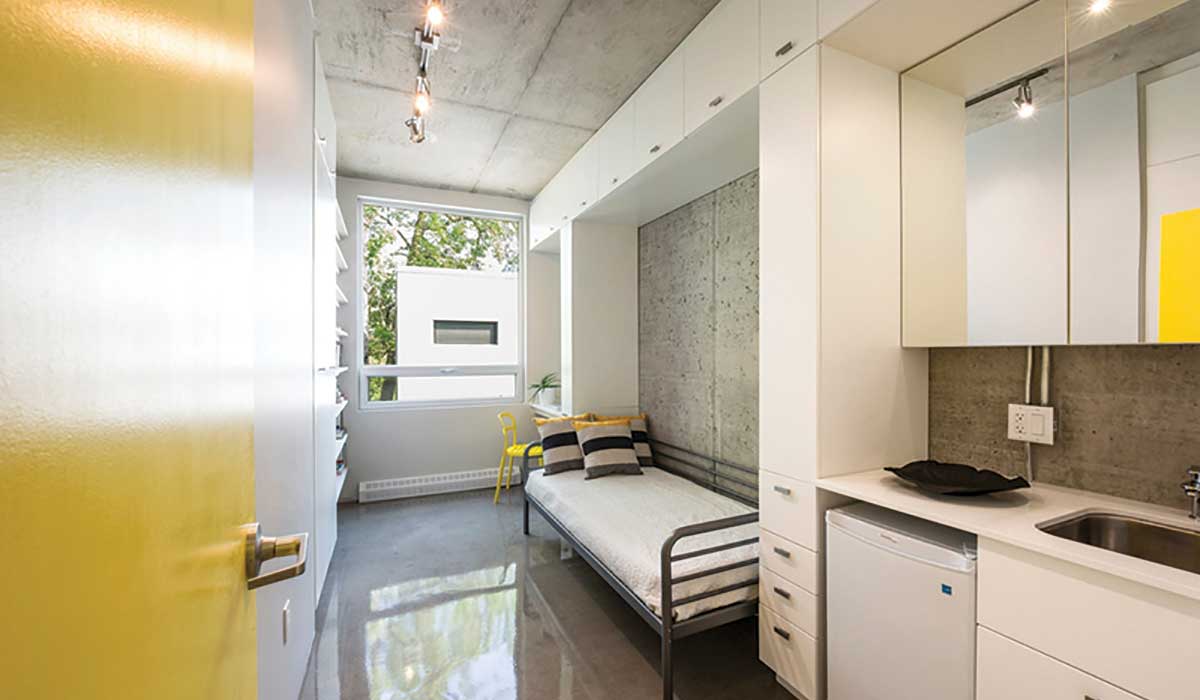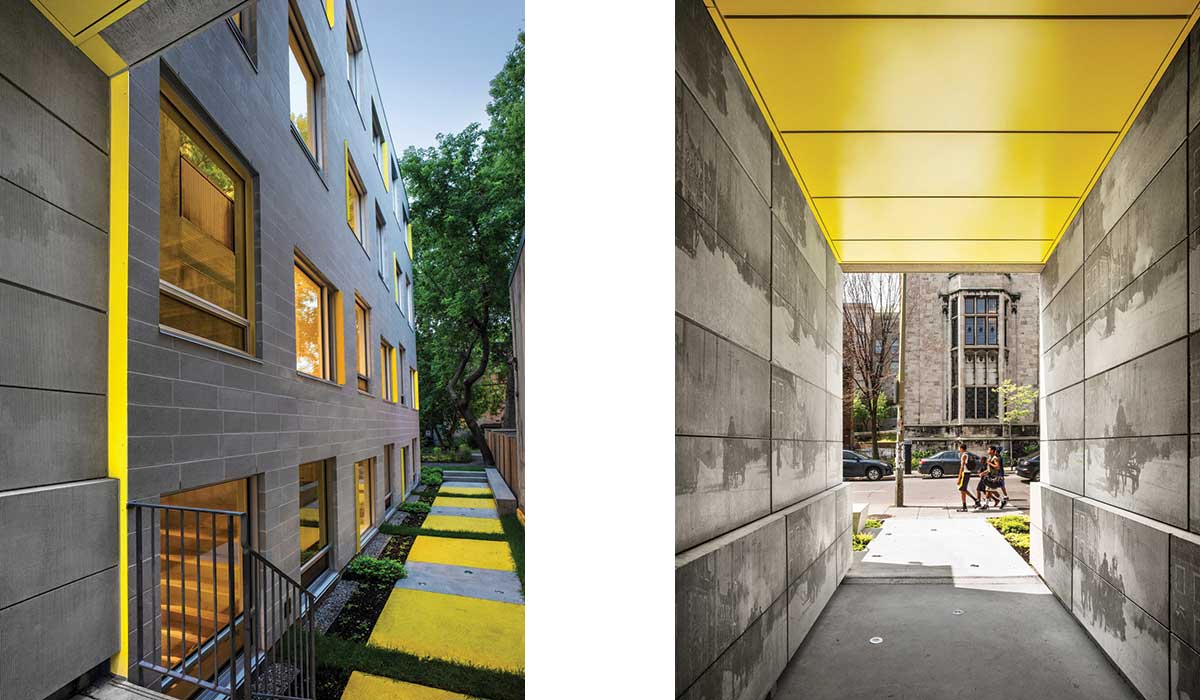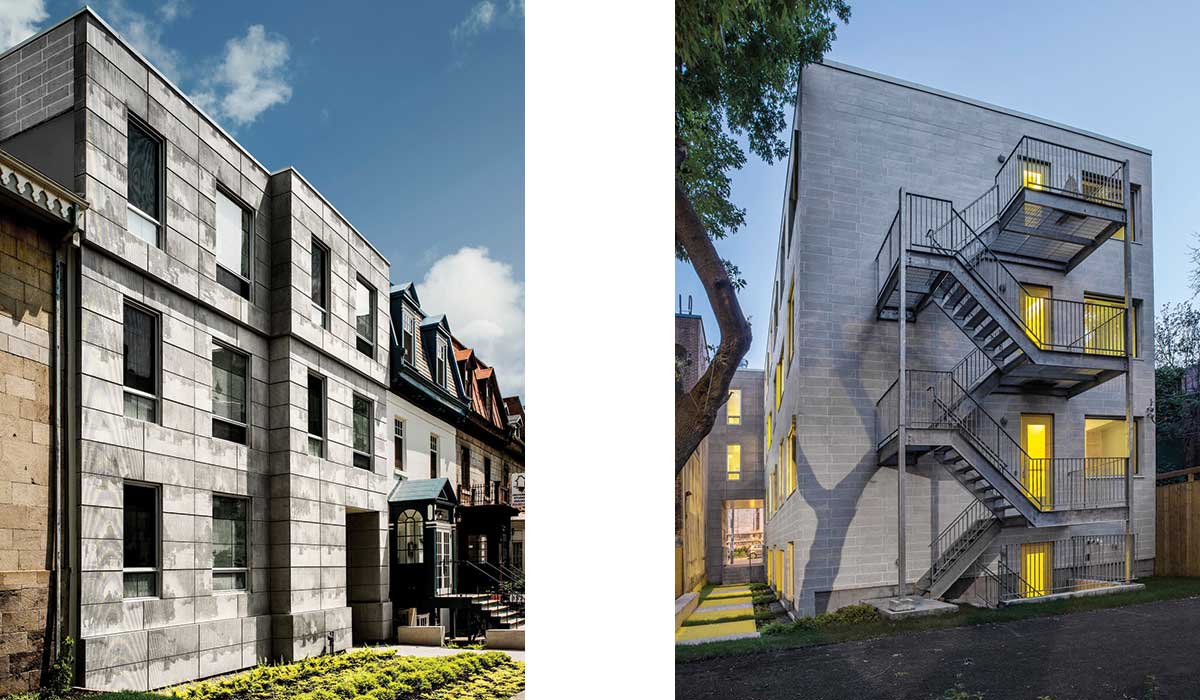
Fact File
Project Name: Edison Residence
Location: Montréal
Project area: 9,000 sq.ft
Photoengraved concrete supplier: Reckli, Solubrik, Saramac
Photographer: Marc Cramer
Source: v2.com
The Edison Residence creates an animated architecture by using new technology in a socially engaging way. The project encapsulates an architecture that heightens the intellectual and perceptual experience of its inhabitants by stimulating active looking. The film sequence photoengraved into the concrete façade is extracted from the sequence of stills from the film: Montreal Fire Department on Runners (Edison, 1901). The film was chosen for both its historical and contextual relevance: referencing the fire that vacated the site and highlighting the prolific inventor, Thomas Edison.

Materiality constraints arose from the outset of the project as the site is in a heritage zone; the palette was limited to masonry. The process of photoengraving concrete was selected for its sensitive properties. The refined technique of photoengraving is an intricate tool facilitating a playful and adaptable narrative, on an otherwise brutal and barren material.
Specifically, the process of photoengraving translates an image into a positive/negative representation, which is then converted into a series of vertical striations that form the image. Playing on light and shadow, each film still, and by extension, the sequence in the photoengraving technique is perceived in an ever changing, dynamic manner as the sun’s oblique angles accentuate, or the clouds soften the visual perception of the vertical ribs that form the image. The panes of glass on the front facade are also screen-printed with complementary images, helping to achieve the desired sequential effect.

The residence houses 30 individual rooms and communal living spaces such as kitchen, lounge, living room etc. Each student room is designed as an optimal module, outfitted with floor to ceiling built-in storage, and an alcove to slide in a desk. All private rooms give onto the quiet communal garden, which wraps the entire footprint of the building, providing both recreation and security for the users. The side façade and garden abide by the same conceptual cinematic strategies; the yellow markers are a graphic way of marking individual living modules. The primary entrance is a contemporary tribute to Montreal’s traditional method of building a protected passage for horse carriages, which offers an intimate approach to the building.















